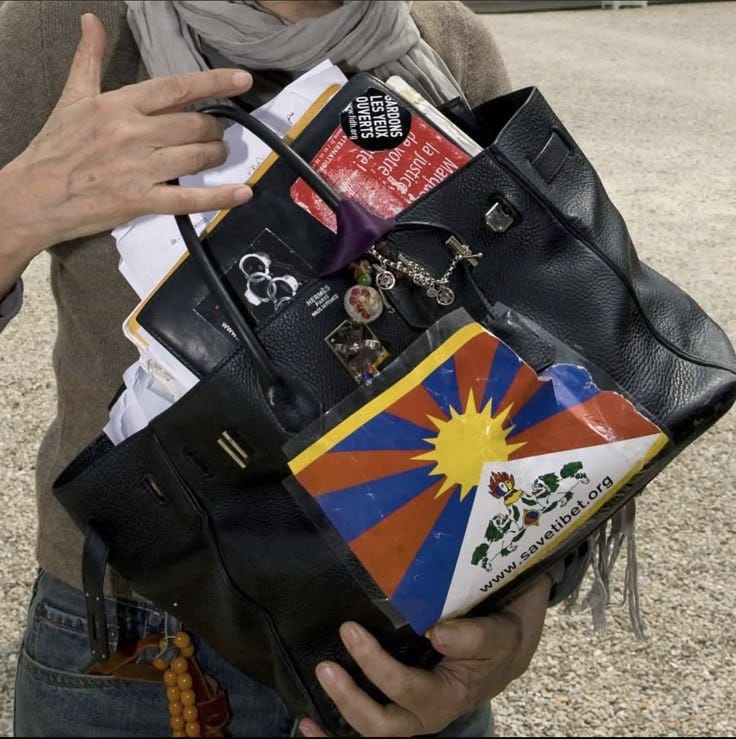Aja and Annie are friends from back home. Aja has the ingénue face of a French actress, Annie looks like a fairy with white-blonde hair and glitter around her eyes. They’re sitting outside of the dorm I lived in my freshman year of college, legs crossed on the low stone wall that borders the sidewalk.
Annie is in all white and cream, glowing a little in the after-school twilight. Aja is wearing bootcut jeans and a thin, close-fitting top in dark red, like one from a TikTok video of what Gen Z girls think millennial women wore to high school in the 2000s (these videos seem pretty accurate).
The air on campus, which runs the length of a city block between Seventh and Eighth Avenue, is full of excitement. It’s the first week back to school and it’s New York Fashion Week, a line-up that puts pep in the step of even the most blasé fashion student.
It’s only Annie’s first semester, but she says she knew she always wanted to go to school here. In fact, it’s the only college she applied to. It’s been good so far, she finds the students inspiring compared to what she would get if she went to a university in Colorado, where she and Aja grew up.
Our conversation starts off a little slow, but spirals into something that’s stayed with me for months when we start really talking about style. Both girls agree that getting dressed is an entirely spiritual practice.
“I’m inspired by like, whatever makes me feel more open to the world,” Aja says. “And whatever makes me feel like I can exist in my nature and be in like, a constant cycle of giving a piece of myself to the world.”
While both girls love to get dressed up, they say it’s not just to be seen by others, it’s for themselves too. If they walk out of the house looking like they want attention, it’s because something greater guided them to walk out of the house that way. “When I'm getting dressed in the morning, it has to be this heart reaction, this soul reaction,” Annie explains.
“I'll put a necklace on and immediately feel attached to the universe. I feel attached to myself. I feel attached to my heart.”
Sometimes the connection between what’s being worn and the intention in wearing it is straightforward and ancient. “There's so many clothing articles that are literally spiritual,” Annie says, rattling the layers of jewelry that loop around her neck, fingers, wrists and ears. “This is my badassery amulet,” she laughs, pointing to something silver and jaggy. “And I wear it when I want to feel like a badass.”
“But then it's contradicted by my flower pendant.” That’s the small flat hibiscus charm on a white cord around her neck. “Because I feel like I have a lot of beauty and abundance and expressiveness of being like, I'm here!”
Later on, Annie tells me that she feels like her heart is a flower, a realization she came to through experiences she had while meditating. The hibiscus amulet is just one piece of flower-wear she’s found herself drawn to.
Aja learned that energy is power at a young age. She was raised Buddhist and the nature of her childhood led to the rigorous spiritual practice she maintains today. There was her dad being into aliens and the intense dreams she had as a kid, and the sense that she was tuned into the frequency of all the women making art before her (for the record, Aja isn’t actually in college right now — she’s focusing on her art).
Both girls think being specific about what you wear and how you wear it also acts as a kind of spiritual street smarts. “New York is kind of fucking scary,” Annie says. “Setting intentions with every single thing that you wear is important.”
“Like, why am I wearing this? How is it protecting me? What type of vibe am I giving off to other people?”
At one point, I ask about the music that’s been quietly humming throughout our conversation. Aja flashes me her phone screen, she’s playing heart sutra chants on Spotify.
I wonder, knowing the answer, if Aja and Annie ever wear clothes like leggings.
“Never.”
“When I sleep, I'm either naked or I wear a silk gown,” says Aja. “Life is hard, life can be really boring and mundane. But if you're wearing something that makes you feel like you're still holding on to expression and life force and wonder and curiosity, then it's like… nothing can beat that.”
It’s not always silk and collar bones for these two though. They also wear baggy things, clothes that cover and insulate. Theirs is a practice of continuum: reaching, protecting, revealing. “I love dressing really beautifully and sensually and looking like I'm like a goddess,” says Aja. “But I also don't want everybody to see me in that light. Most of the time when I'm really dressing to the nines, it's when I'm alone or doing a ritual. It’s not for somebody to take a picture.”
A few days after we speak, I meet a friend on Elizabeth Street to get our auras read. I know what color mine will be before we go. After, we walk through galleries nearby and talk about the project he’s working on, a literary magazine about spirituality. He tells me the name he has in mind.
It starts raining so we run into a cafe and scratch out some more ideas. He texts me a few days to say that the magazine has a new name, Amulet.
It’s been around six months since I met Aja and Annie on the street. I walked away that night feeling totally energized by these girls who put so much into what they wear, who believe so deeply in the power of the connection between the internal, the external and the everywhere. I’ve always found it easy to interact with clothes this way, to love a surface as a surface and as something more.
At the Tory Burch fall show in February, I watch models march through the Museum of Modern Art with feathery rabbits feet wagging at their waists. I think about how it makes sense to sell something like this in the wake of the bag charm trend, which saw participants load up their purses with keychains and scarves, often purchased all at once, to create the effect of Jane’s jangly Birkin.
A couple weeks later, Chemena Kamali’s new Chloé girls wear reissued Paddington bags down the runway, weighed down with chains and rabbit’s feet. In about half of the looks the rabbit’s feet are scaled up into big, wafty fur baubles worn like stoles. Bohemian women like these are floating around more these days. Girls with narrow hips under white cotton skirts and big silver hearts at their necks. Girls with a lot of stuff.
Before it found its way into this year’s collections, the rabbit’s foot was a proto-bag charm for those who grew up in the ‘90s and the 2000s, and an amulet thought to bring good luck across a range of cultures. I remember buying one with field trip money at a Native American festival when I was around nine years old, attracted to its soft dyed fur and the idea that it carried lucky magic (and the fact that I knew exactly where I’d put it, on the zipper of my L.L. Bean backpack).
I have an old Saint Laurent Downtown bag that’s done up with special charms: a silk scarf from a job I had on Canal Street, a Kewpie baby from the bottom of a package from my college roommate, and a jangle of cheap metal letters that spell I ♡ BIZ, strung together from different Union Jack keychains by another former roommate. I loved adding to the mix, but I loved it less when everyone started doing it. I’m trying to get over that feeling.
That’s part of why I still think of Aja and Annie and why I wanted to write about them. Clothing does not feel spiritual right now, it doesn’t feel amuletic. It’s something to debate, to search for and get, but to never really find. The meaning changes too quickly, you have to skip on your toes around white water if you’re scared of getting washed away with the tide. Annie gets dressed to give a piece of herself to the world. How many of us feel like a piece of who we are is taken when we see someone dressed just like us?













Fascinating, a Buddhist perspective (in fashion and generally) is so rare to read about!
omg i know the girl aja you interviewed (i know her sister from school but know of aja from instagram), her style and art is just how you described